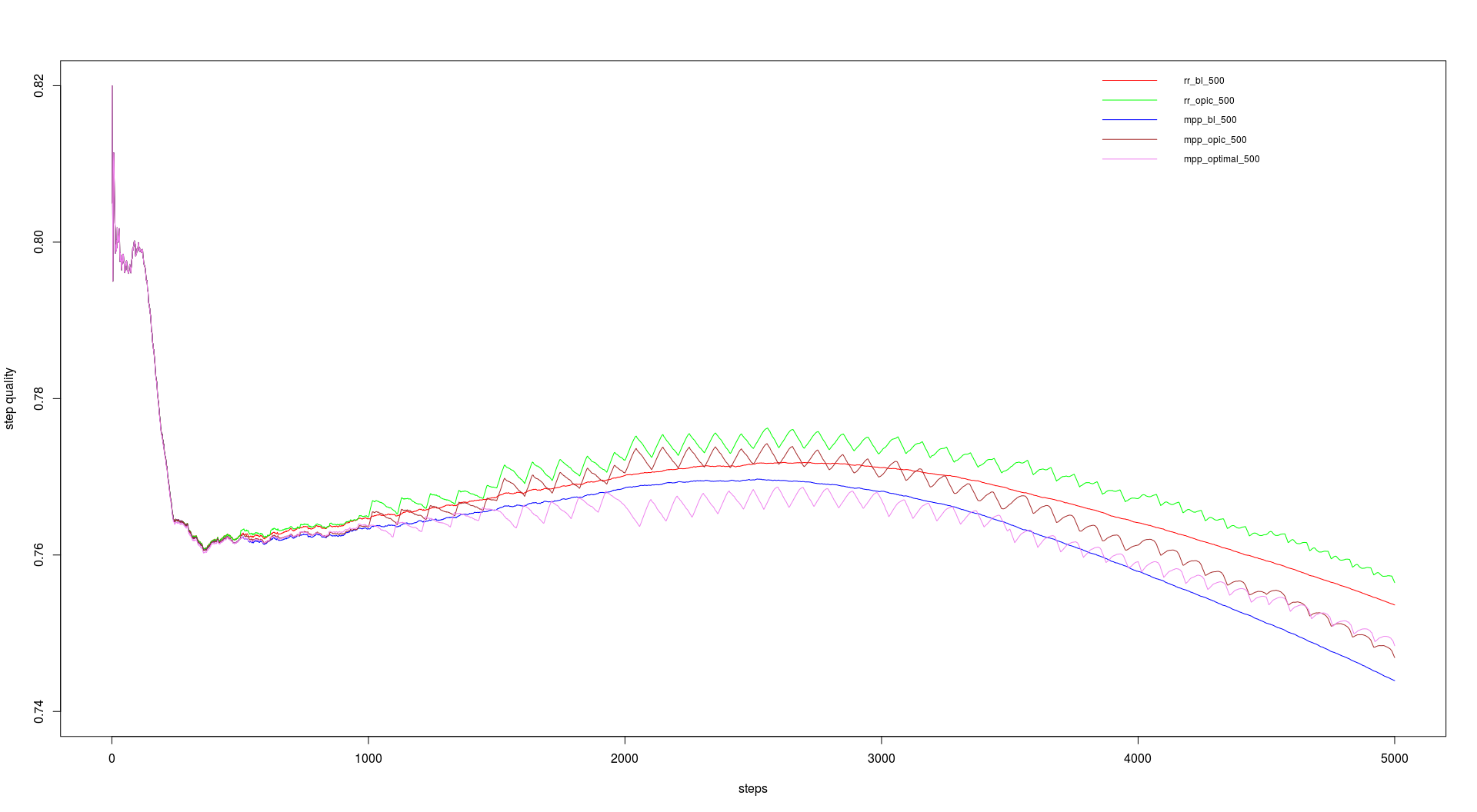I am running my own mail server for a while now. Since the beginning I was thinking about how to store the mails encrypted, so that no one can read the mails with access to the server. The solution I came up with is relative easy to setup and is based upon OpenPGP/GnuPGP.
The basic idea is to take incoming mail before it is stored and encrypt it. I'm running postfix, which has the option to filter queued mails with external content filters. A content filter gets a mail via stdin, does whatever it needs to do and either rejects a mail or put it back into the mail queue.
I wrote a relativ simple Python script that takes a mail from stdin, processes it and then writes it back to stdout. The script can either decrypt, encrypt, sign or sign and encrypt a mail. It also tries to protect the mail headers following the memoryhole specs and supports Thunderbirds/Enigmails encrypted subject feature. The drawback is that Enigmail only supports the encrypted header from the memoryhole specs and other mail clients don't support them at all. For the content_filter in postfix I wrote a Bash script, that will resend the encrypted mail to put it back into the mail queue. The scripts can be found on GitHub.
Setup
- Install
gpgmail
-
Add a new user:
adduser --shell /bin/false --home /home/gpgmail --disabled-password --disabled-login --gecos "" gpgmail
-
Create .gnupg folder and change permissions:
mkdir /home/gpgmail/.gnupg
chown gpgmail:gpgmail /home/gpgmail/.gnupg/
chmod 700 /home/gpgmail/.gnupg/
-
If mails should not just get encrypted but also signed, create a new key pair:
sudo -u gpgmail /usr/bin/gpg --homedir=/home/gpgmail/.gnupg --expert --full-gen-key
-
Import public keys and chnage trust:
sudo -u gpgmail /usr/bin/gpg --homedir=/home/gpgmail/.gnupg --import /home/gpgmail/pubkey.asc
sudo -u gpgmail /usr/bin/gpg --homedir=/home/gpgmail/.gnupg --edit-key <KEY> trust save
sudo -u gpgmail /usr/bin/gpg --homedir=/home/gpgmail/.gnupg --edit-key <KEY> trust quit
-
Edit /etc/postfix/master.cf
:::unixconfig
smtp inet n - y - - smtpd -o content_filter=gpgmail-pipe
smtps inet n - y - - smtpd -o content_filter=gpgmail-pipe
submission inet n - y - - smtpd -o content_filter=gpgmail-pipe
gpgmail-pipe unix - n n - - pipe
flags=Rq user=gpgmail argv=/usr/bin/gpgmail-postfix sign-encrypt gnupghome=/home/gpgmail/.gnupg key=<KEY_ID> passphrase=<PASSPHRASE> encrypt-subject -oi -f ${sender} ${recipient}
-
Restart postfix.
Sources
I updated the API URLs to be more in line with conventional standards. All current API endpoints can now be found under /api/v1/. For reference the current endpoints are:
In addition I have rewrote the OAI-PMH Django app and made a separate Git repository out of it. You can find it on Github.
I recently read an interresting post about the target="_blank" vulnerability. This vulnerability leaves a user open to a very simple phishing attack and is quite unknown. When a link uses the target="_blank" attribute not accompanied with the rel="noopener" attribute or in the case of Firefox rel="noopener noreferrer" the opening site gives the new site access to the existing window through the window.opener API, allowing a few permissions. Some of these permissions are automatically negated by cross-domain restrictions, but window.location is fair game.
To see this vulnerability in action you can use this link. It'll open the post in a new tab/window and redirect this window to an other page.
The code below shows the necessary code for the window.opener API to redirect the opening site to a new location.
:::javascript
if ( window.opener ) {
window.opener.location = "https://jnphilipp.org/pages/page/gone-phishing/?referrer=" + document.referrer;
}
Because of that post, I removed all target="_blank" attributes from the links. I had also a few other changes that had pilled up and which I hadn't gotten around to put online. Most are on the back end side. On front end side I changed manly the color of the sidebar.
I must sadly announce the end of life for TIMA. Or at least the end of the TIMA website at https://tima.jnphilipp.org. This is due to the practically non existent traffic and my inability to maintain the site. The EOL will be at the end of the month, the 30th of September 2016. I will upload a database dump with the associations to this post after the shutdown.
Update: So the EOL of the TIMA website is reached. As promised a dump of the associations can be downloaded here as a JSON-file. For each word the language, count, identifier and associations are given, here the count indicates how often the word was answered. An association has the same informations, but here the count indicates how often the association was given to the word.
Over the last few weeks I added a few new features. The most extensive feature I added is the API. The API consists of two parts, the first is to retrieve the posts and projects as JSON. The other is an OAI-PMH endpoint, which returns XML. At the moment I only support the metadata in the Dublin Core format, but I plan to add CMDI. For details on the API I added a page to the project section. The second feature I added was inspired by this post about signing web content using PGP. I added signatures to the posts and projects which can be view in the source code and verified using my public key or with Keybase. On a side note, I got new certificates from Let’s Encrypt and forcing HTTPS now.
Since my last Post about TIMA a few thing have happened and changed. We added and FAQ page, and most noticeably a we added a section with games to the Website. Currently there is only one: AssociationChain.
AssociationChain is a simple game in which you and TIMA build an association chain together. The rules are as follows: You and TIMA alternately associate a word to the previous association. The goal is to build long chains.
As for the Apps it's a work in progress. The basic functionally of the Website is in the App and works we'll see that rest get's into it an that we can distribute it. As for the game Apps that will take some more time.
As for the TIMA itself. We currently support four languages: German, English, Spanish and Farsi. We have a total of over 3400 words and over 4000 unique associations.
TIMA short for "TIMA is my association" is a citizen science project I currently work on. The goal of the project is to build a large database of associations. To get the associations we need your help. Everyone who want can go to our website and start. First you need to select a language and then you get a word and asked to type in your association of said word. For each association you will receive points and a new word.
Besides the website we are in the process of building some apps. The first and most basic app follows the design concept of the website and gives you words and asks for your associations. In a later phase we have plan for apps that will have a more game like approach. One will be based on the concept of the German TV-show Familien-Duell. I will write more to that in a later post.
In addition to the collection of association we also publish them. On the website is a list of all the words and their association with some graphs and statistics. We have also an extensive API, over which the data can be exported. In addition we have included OAI-PMH (Open Archives Initiative Protocol for Metadata Harvesting). This is a low-barrier mechanism the expose metadata for repositories. Our base URL is https://tima.jnphilipp.org/oai2/.
This is one of the website I mentioned in my previous post about Bootstrap. The website is written in Python using the Django web framework. You can checkout the code on GitHub.
I recently had to build a few website, about which I'll write soon a bit, in which I used Bootstrap. Since the design I used when I build this site was somewhat crude I started to do some redesigning using Bootstrap. The result of these efforts are now online. Enjoy!
I'm sorry I'm a little late with this, but I finally came around to write this post. In the last term I took a course were we had to write a simulated web crawler and implement different crawling strategies. The complete code and detailed descriptions on inputs and how to compile and run it are on GitHub.
First we had to implement breadth-first search strategy and then two page level (backlink-count and OPIC) and two site level (round robin and max page-priority) strategies, which should be combianed as desired. And finally we should use OPIC, backlink-count and the ratio of good to bad pages to develop a formula to combine them to a strategy called OPTIMAl.
On the first run two input files need to be provided, the first on is the link graph and the second one the quality mapping. Bevor the actual crawling starts, the files will be read an stored in a MapDB for easy access. As long as the MapDB files exist there is no need to provide the link graph and quality mapping file. If they are provided the MapDB will be recreated.
For performance reason the crawling itself is done in threads via a ScheduledThreadPoolExecutor. A single thread performce the crawling of a single site.
For the course we had a link graph with about 230 million entries (including duplicates) on which we should run our tests. We should do 5000 steps with 200 URLs per step and a batch size of 100 and 500. The batch size dictates the update intervalls for backlink count and OPIC. The runtimes are in the table below and the performance in the graphs.
- breath-first search: 1:11.241s
- round robin, backlink count, batch size: 100: 3:03.407s
- round robin, backlink count, batch size: 500: 2:59.153s
- round robin, OPIC, batch size: 100: 3:35.574s
- round robin, OPIC, batch size: 500: 3:06.375s
- max page priority, OPIC, batch size: 100: 3:30.296s
- max page priority, OPIC, batch size: 500: 3:03.940s
- max page priority, backlink count, batch size: 100: 3:14.608s
- max page priority, backlink count, batch size: 500: 2:17.481s



The last few weeks I worked with some people on a smart meter project. Our goal was to show how to receive the data on a large scale and to handle them. We divided it into three parts, the first was a generator for generating lifelike data. The second part was based on Apache Storm and Apache Accumulo received the data and stored them and the third part generated reports with Map Reduce.
The code can be found on github:


